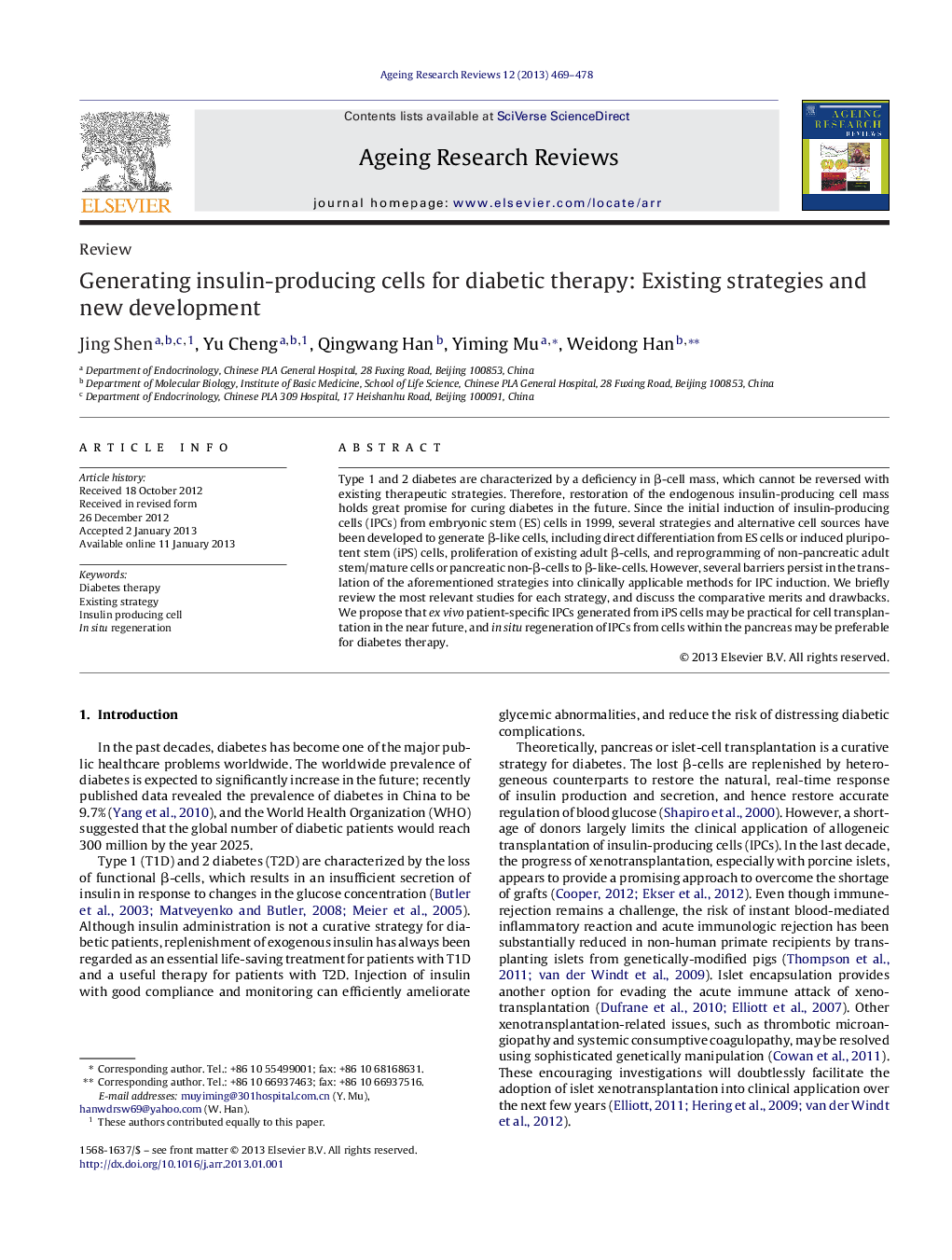| Article ID | Journal | Published Year | Pages | File Type |
|---|---|---|---|---|
| 1902337 | Ageing Research Reviews | 2013 | 10 Pages |
Type 1 and 2 diabetes are characterized by a deficiency in β-cell mass, which cannot be reversed with existing therapeutic strategies. Therefore, restoration of the endogenous insulin-producing cell mass holds great promise for curing diabetes in the future. Since the initial induction of insulin-producing cells (IPCs) from embryonic stem (ES) cells in 1999, several strategies and alternative cell sources have been developed to generate β-like cells, including direct differentiation from ES cells or induced pluripotent stem (iPS) cells, proliferation of existing adult β-cells, and reprogramming of non-pancreatic adult stem/mature cells or pancreatic non-β-cells to β-like-cells. However, several barriers persist in the translation of the aforementioned strategies into clinically applicable methods for IPC induction. We briefly review the most relevant studies for each strategy, and discuss the comparative merits and drawbacks. We propose that ex vivo patient-specific IPCs generated from iPS cells may be practical for cell transplantation in the near future, and in situ regeneration of IPCs from cells within the pancreas may be preferable for diabetes therapy.
► We reviewed existing strategies of IPC induction. ► We pointed out merits and drawbacks of each strategy. ► We proposed ponderable resolutions for each strategy.
